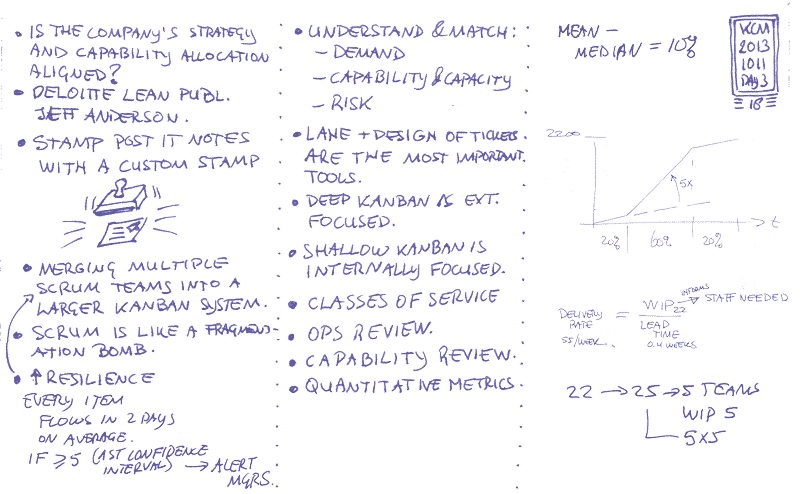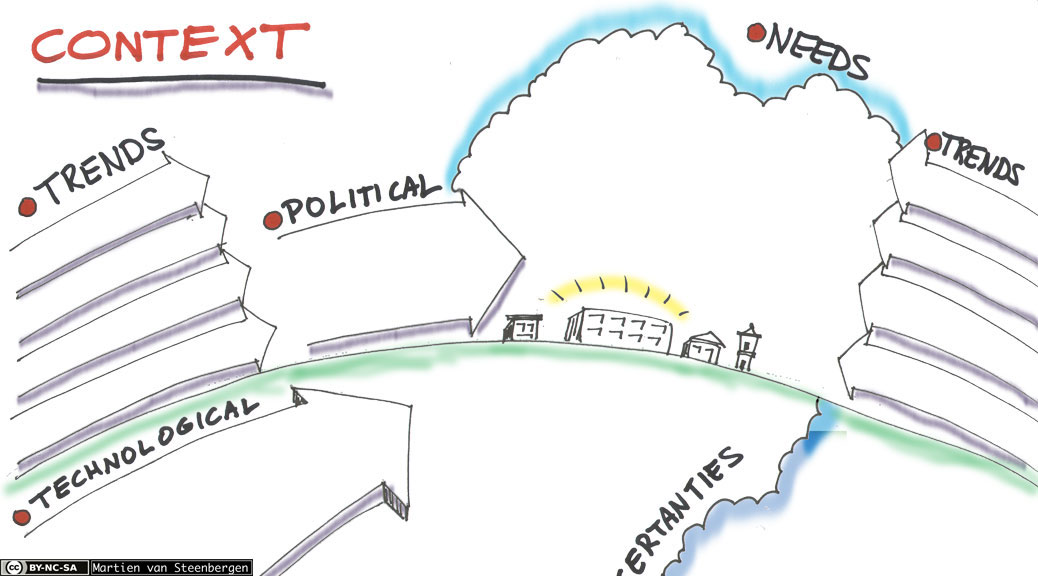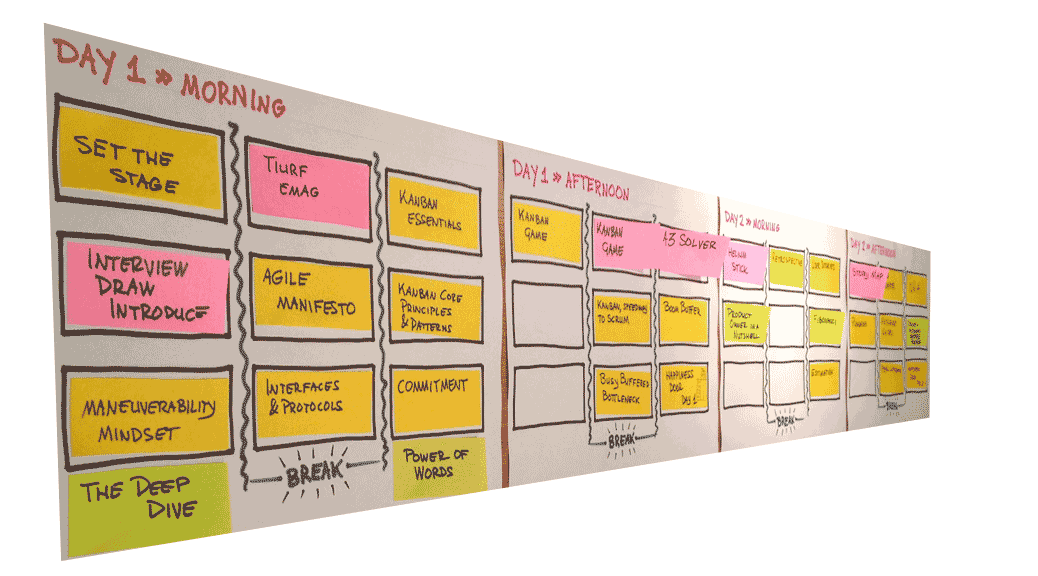Science, technology, and economics focus on efficiency, but not effectiveness. ”’The difference between efficiency and effectiveness is important to an understanding of transformational leadership”’. Continue reading “Effectiveness and efficiency”
Creativity and down time
Vincent Walsh talks about ”down time” that facilitates creativity and the emergence of new ideas. ”Down time” implies that the other part is ”up time”.
I tend to reverse the perspective: our time awake is in fact ”down time” and when we are asleep or relaxed we are actually enjoying ”up time”. We are, however, unaware of our up time.
Nonlinearity
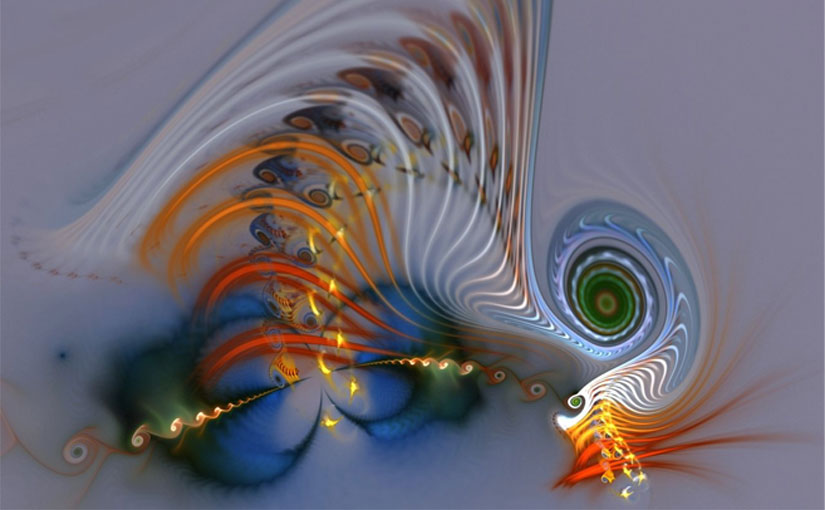
One important source of [[uncertainty]] is a property known as nonlinearity. ”’Nonlinearity describes systems in which causes and effects are disproportionate.”’ Minor incidents or actions can have decisive effects. Major effort can have no effect whatsoever. Outcomes of endeavors can hinge on the actions of a few individuals. Issues can be decided by [[chance|chances]] and incidents so minute as to figure in histories simply as anecdotes.
Uncertainty
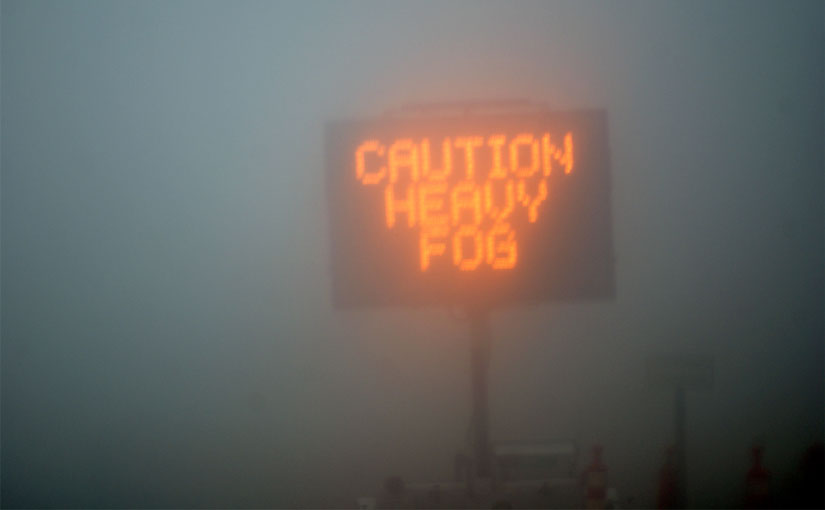
An attribute of life is uncertainty. All actions in life take place in an atmosphere of increasing uncertainty, or the “fog of life.”
Uncertainty pervades life in the form of unknowns about the what to create, about the environment, and even about your organization. Continue reading “Uncertainty”
Philosophy Of Command
Centuries of battlefield-tested agility, leanliness, and maneuverability. How agile can you be?
It is essential that our philosophy of command support the way we
fightwork.First and foremost, in order to generate the tempo of operations we desire and to best cope with the [[uncertainty]], disorder, and fluidity of
combatwork, command and control must be decentralized.Adapted from United States Marine Corps Doctrinal Publication 1, Warfighting.
Wonderful paradox, “decentralized command and control”.
Improvement Board

Henrik Kniberg says that Squads at Spotify are using Big Visible Improvement Boards that focus on one to three Actionable Accelerators like:
- “What is blocking us?”
Also, the board shows a Definition of Awesome that includes things like:
- Really finishing stuff.
- Easily ramping up new team members.
- No recurring tasks or bugs.
Goldilocks

- Goldilocks is an interesting technique and basically doing the opposite of estimating: You shape the work into the desired sizes.
Vote each item into one of three piles: “Too Big”, “Just Right”, and “Too Small”. - Split any “Too Big” items into “Just Right”-sized ones.
- Group any “Too Small” items together into “Just Right”.
The Goldilocks Principle applied to sorting stories reminds of potato grading machines that sort potatoes into different sizes.
Enjoy the flow.
Source: InfoQ » Q&A on Kanban in Action.
Context Map
Big Visible Two-Day Agenda
A Big Visible Two-Day Agenda is an excellent visual reference for a training, workshop, or conference.
Each half day is based on a simple 3 × 3 grid with a title. Key:
- Yellow—theory.
- Pink—game or exercise.
- Green—video.
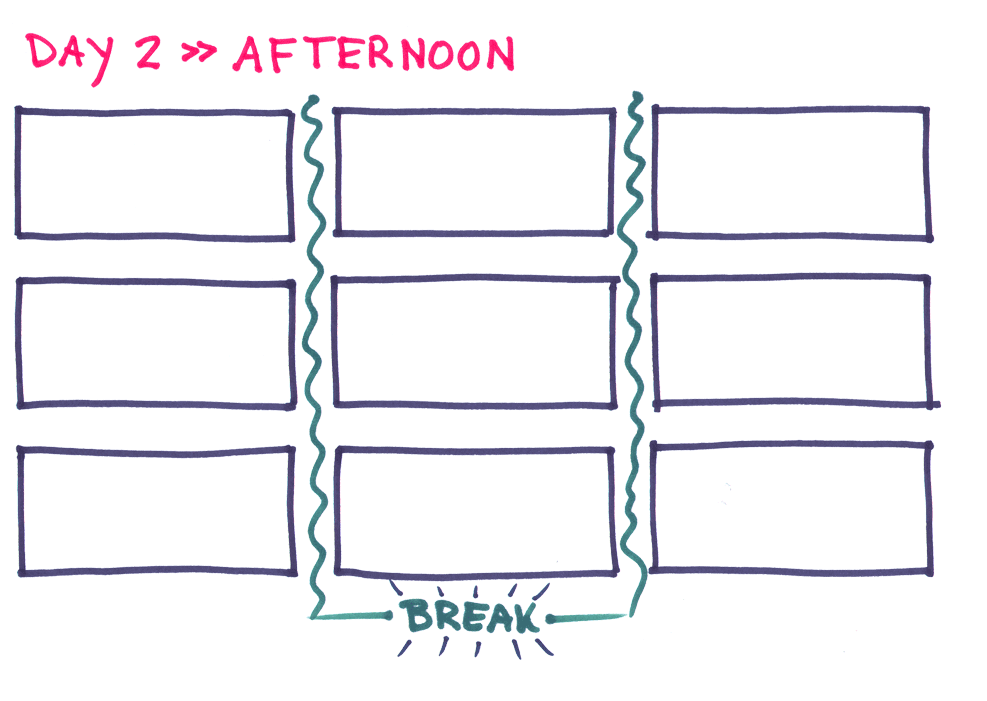
3″ × 5″ Post-it notes cut into 3″ × 1¼″ strips allow for a landscape text that fits nicely in one of the nine cells. It is easy to move the contents around.
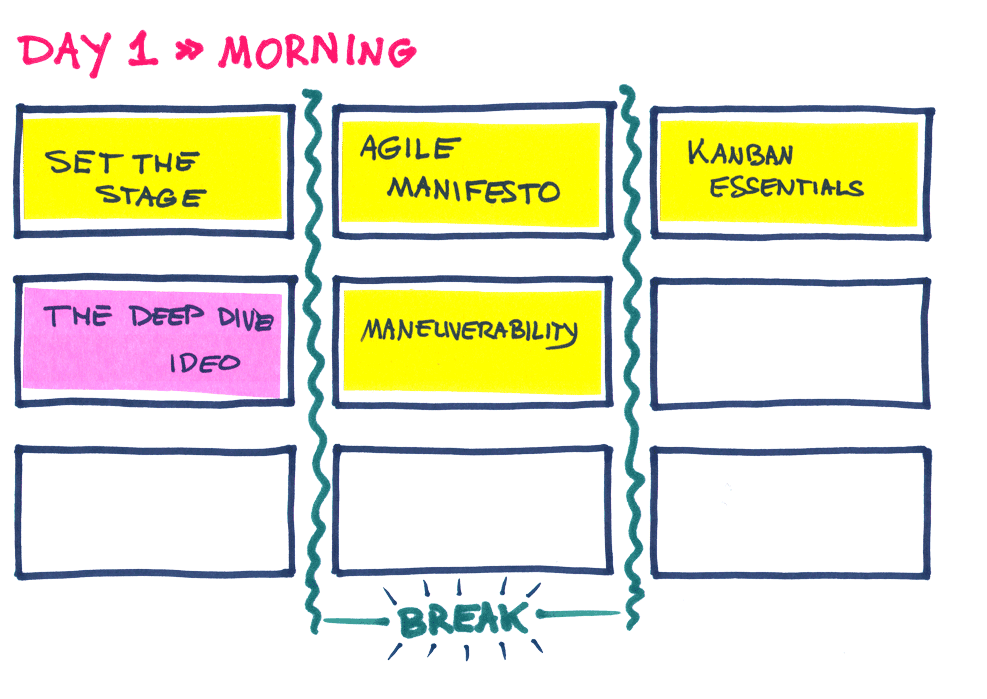
The day before, you can prepare the whole to save time setting it up at the site:
- use sheets of A4 paper with the grid and small Post-it strips;
- prepare four flip charts in landscape orientation with the grid structure—one flip chart accommodates morning and afternoon, each with a 3 × 6 grid;
- prepare the full 3″ × 5″ Post-it notes; you can even already stick them on the flip chart; they might curl up a bit, though.
At the site, stick the four flip charts to the wall, and the Post-it notes to the flip charts.
Kanban Coaching Professional Masterclass
Martien’s notes from the Kanban Coaching Professional Masterclass with David J. Anderson in October 2013 in the Double Tree Hotel, Amsterdam.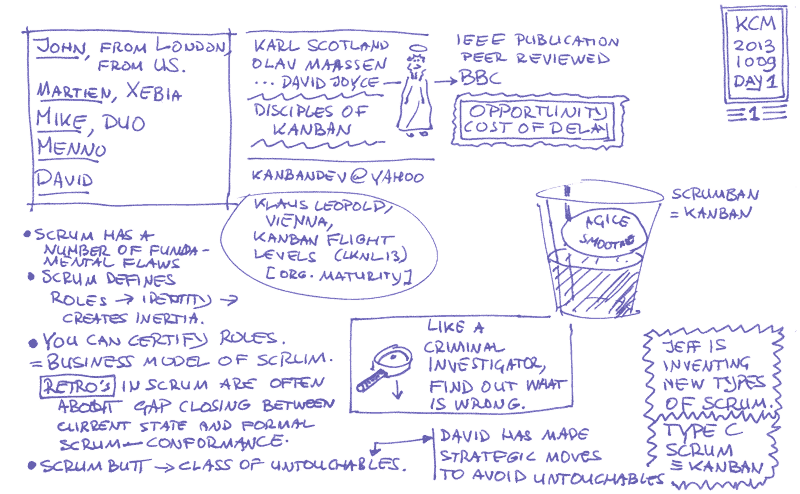
—-
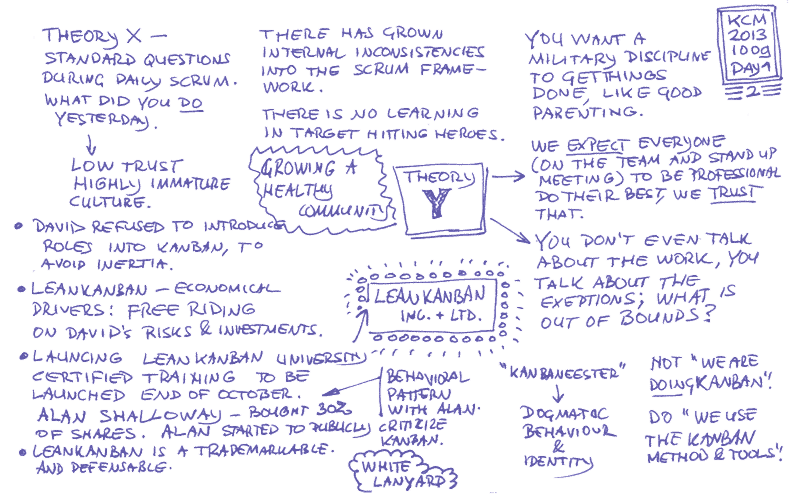
—-

—-
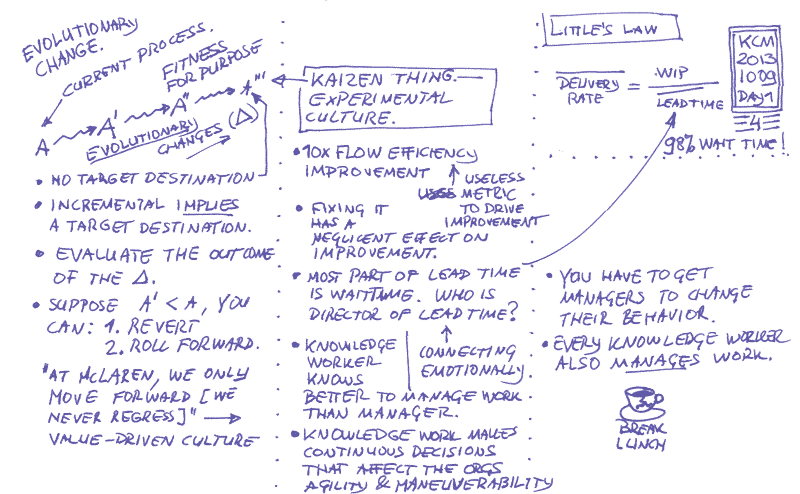
—-
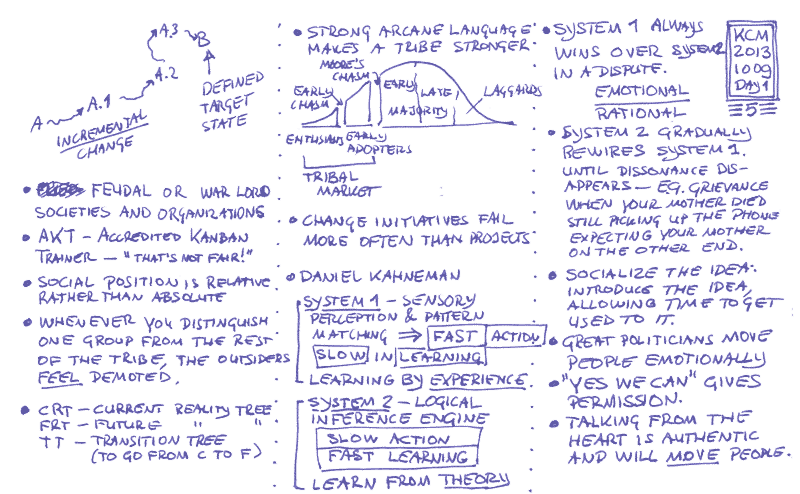
—-
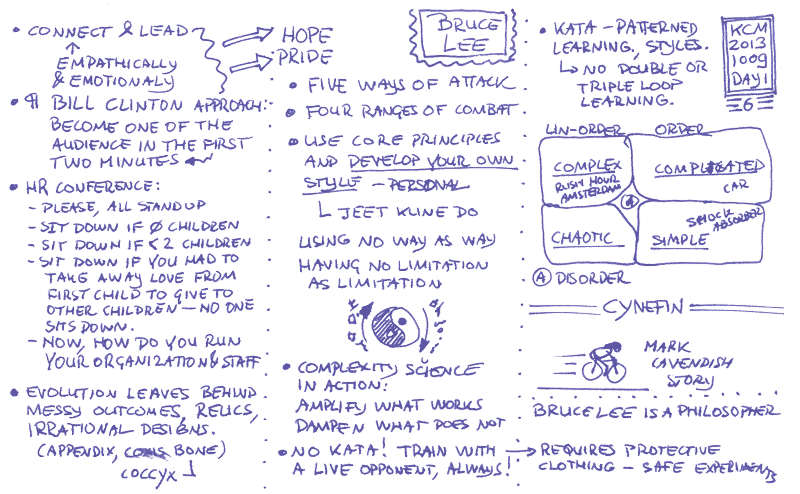
—-
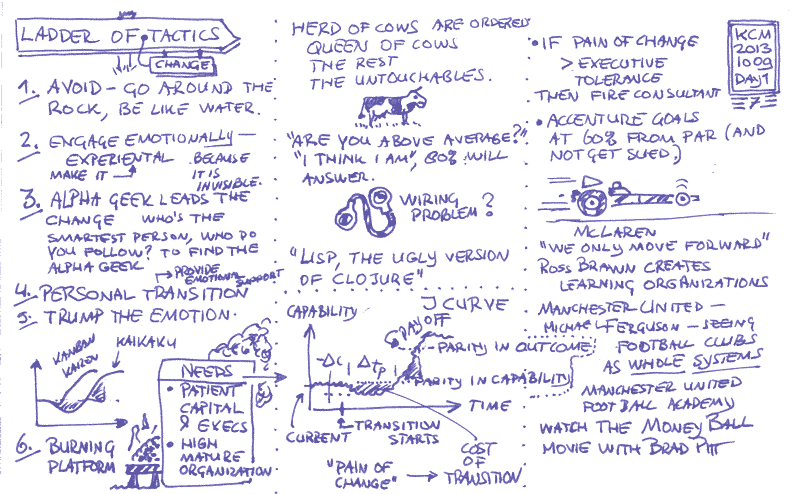
—-

—-
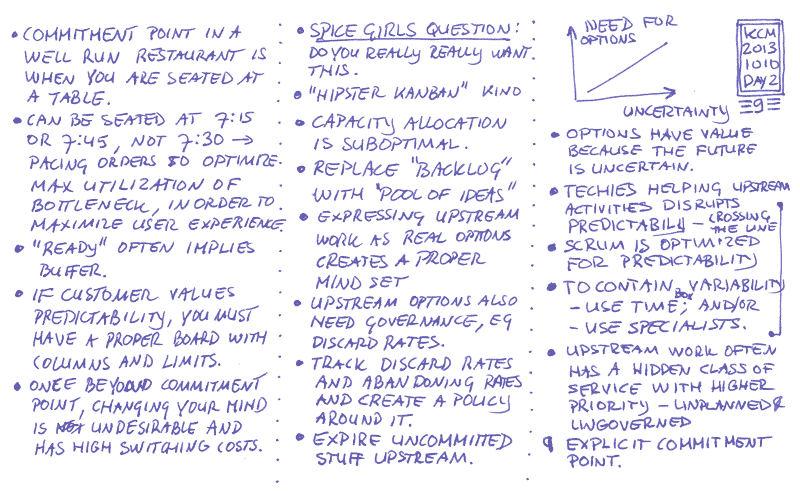
—-
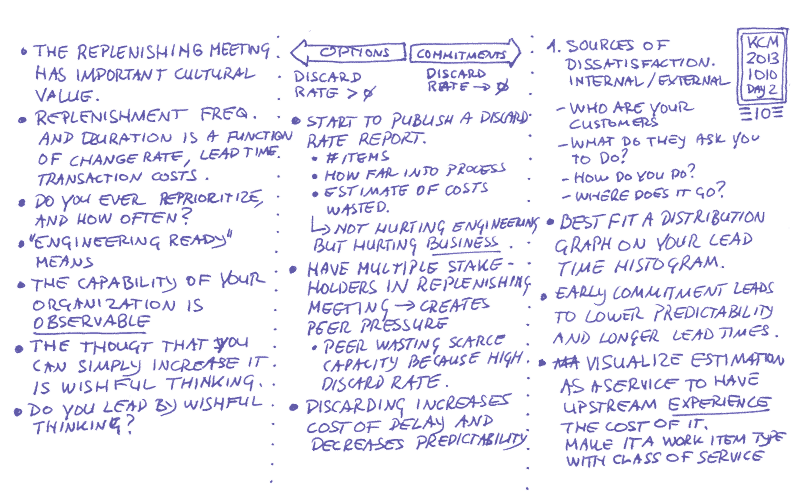
—-
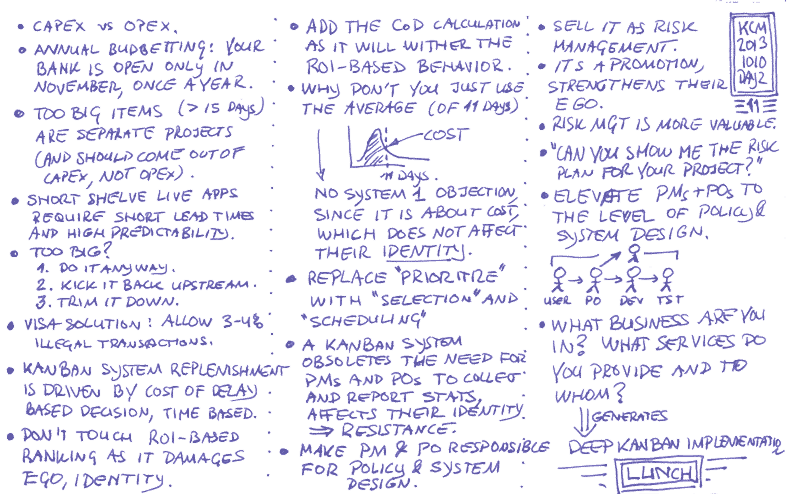
—-

—-

—-
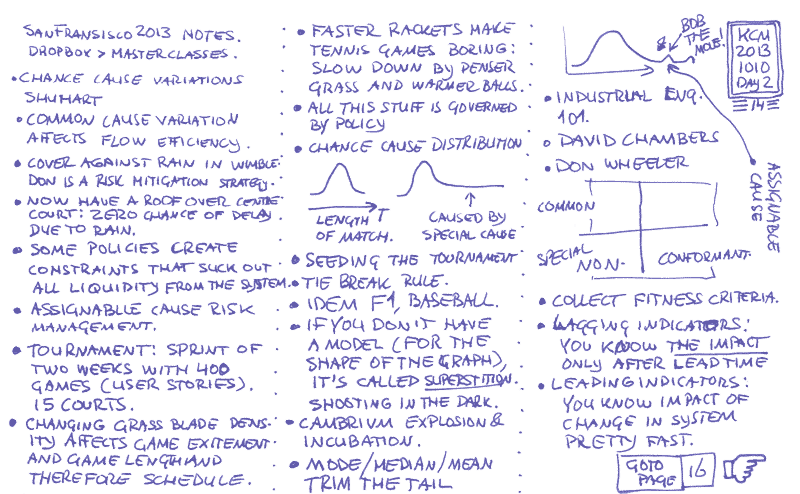
—-
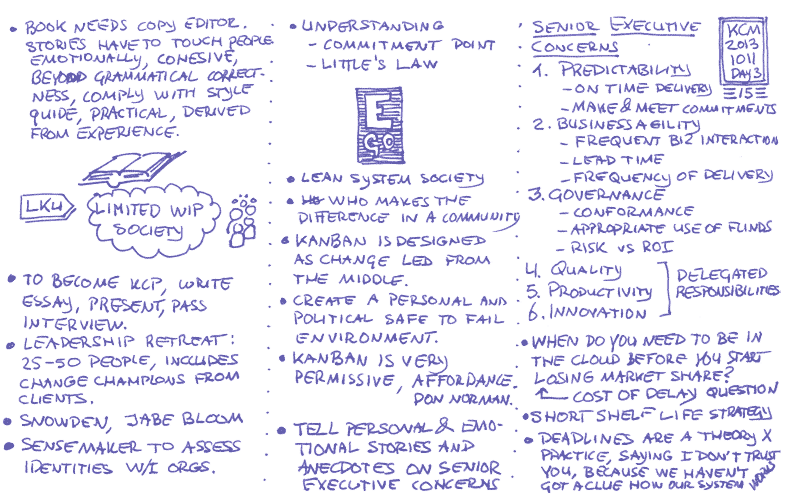
—-

—-

—-
